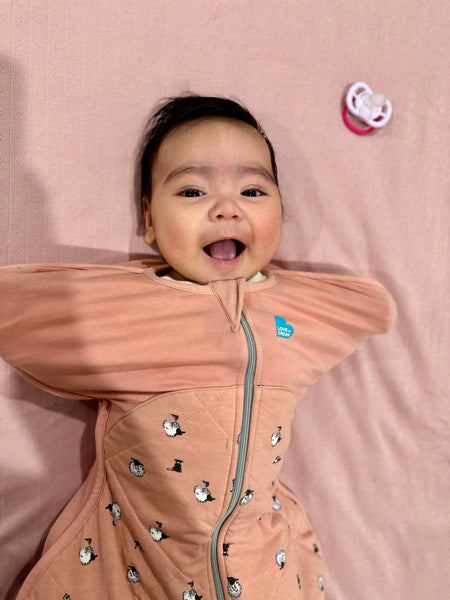What is considered safe sleep for babies?
Creating a safe sleep routine for your baby is crucial. Safe sleep is putting your baby to sleep on their back with the face and head uncovered. They must sleep on a clean and flat mattress that is the correct size for the cot/bassinet.
You must always remove toys, loose objects, and blankets from the cot/bassinet before sleep.
What does a safe sleep environment look like?
A safe sleeping environment is where all potential dangers have been removed and your baby is sleeping in the same room as you for the first six to 12 months.

Key safe sleeping guidelines include:
- A flat, clean mattress that fits the cot.
- A tightly fitted sheet that fits the cot.
- A cot free of loose objects, blankets, and toys.
You can learn more about what a safe sleep environment looks like here.
What are unsafe sleeping arrangements?
You must follow safe sleep guidelines when putting your child to sleep. The below actions must be avoided, as they will put your child at an increased risk of SIDS (Sudden Infant Death Syndrome):
- Putting your child to sleep on their tummy or side.
- Putting your child to sleep on a soft mattress or a mattress that does not fit the cot/bassinet correctly.
- Putting your child to sleep on a sofa or bunk bed.
- Allowing your child to become too hot or too cold during sleep.
- Putting your child to sleep in a separate room to you during the first six-12 months.
- Co-sleeping.
- If you/a family member/partner smoke or smoked during pregnancy.
What are the common risks that impact safe baby sleep?
From the use of excess blankets to a cot that does not meet current safety standards, find common risks that can impact safe baby sleep below:
- Excess blankets, loose objects, and toys can be a suffocation hazard.
- An unsafe cot/bassinet that does not meet current safety standards.
- Hot drinks/food left near the cot.
- Pets left unsupervised around your child.
- Loose cords near your child’s sleep space such as curtains, blinds, wires, or electrical cords.
How does safe sleep reduce SIDS?
Safe sleep is fundamental in reducing the risk of SIDS (Sudden Infant Death Syndrome).






